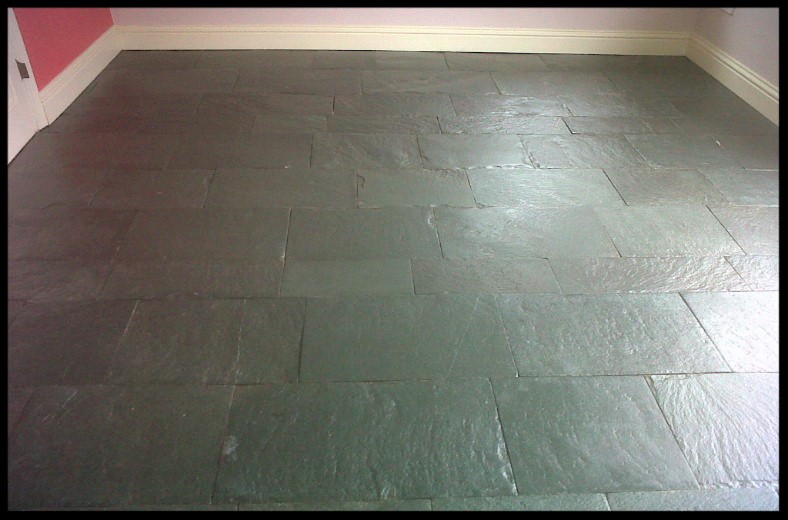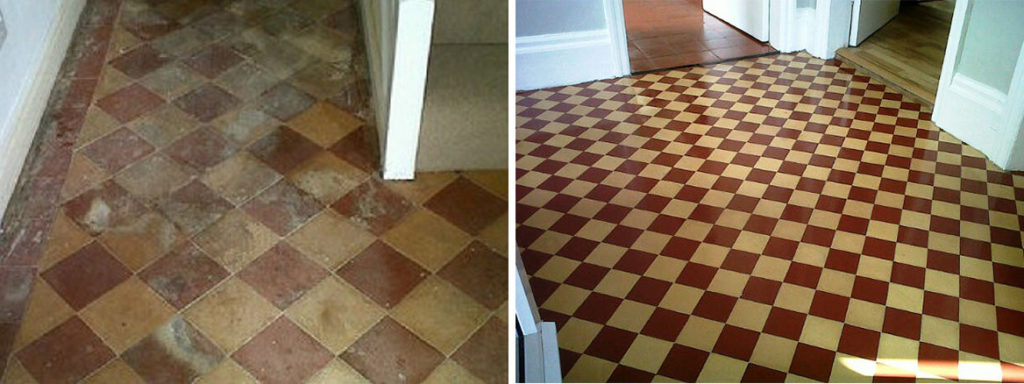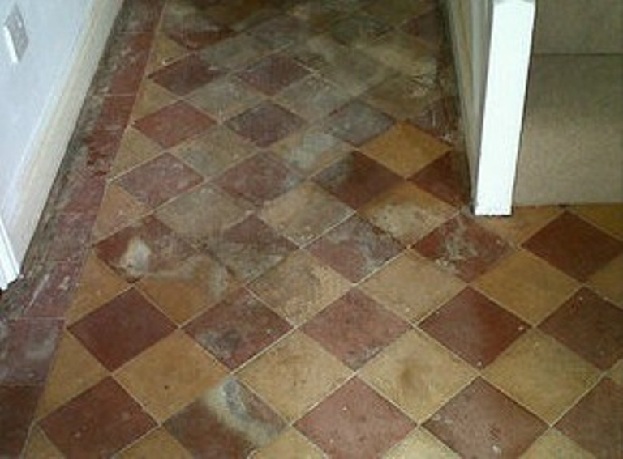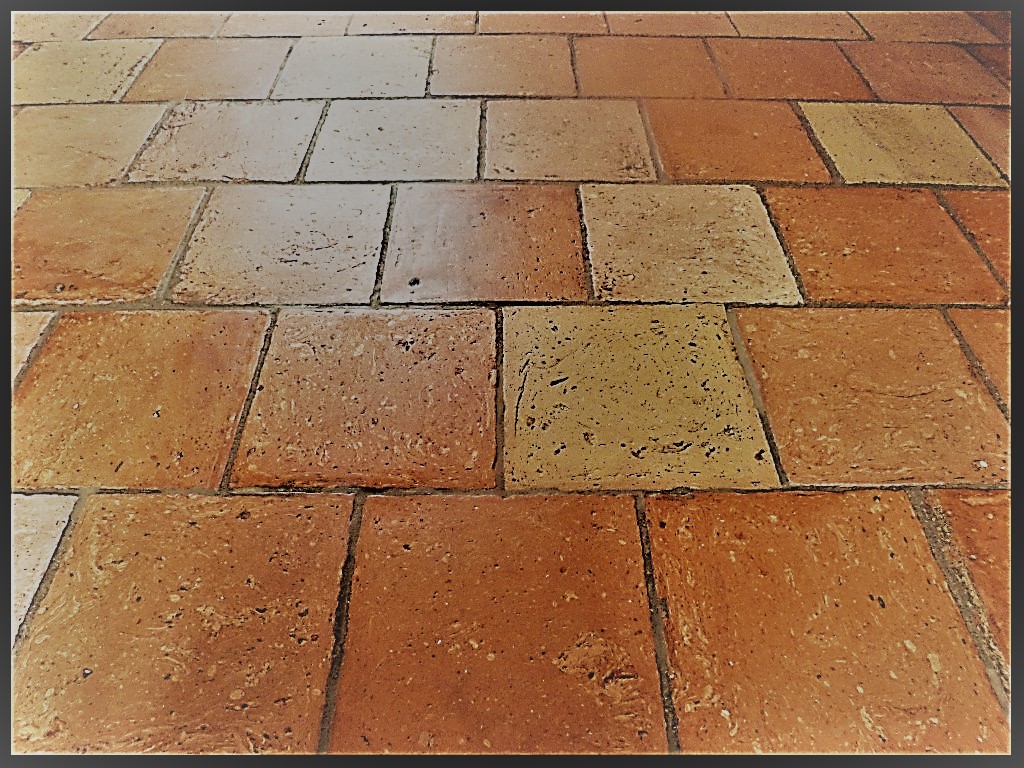Renovating Reclaimed Slate Floor Tiles in Wreningham
When the old Rowntree Mackintosh sweet factory at Chapelfield in Norwich was closed down and eventually demolished, our client acquired a quantity of the beautiful green/black slate flooring tiles which had formed part of the reception area of the plant. They had laid these tiles edge to edge with no grouting in their large kitchen/dining room extension at their home in the village of Wreningham and the result was perhaps one of the most impressive examples of high-quality slate flooring we have ever seen in any location.
The Slate floor tiles had been protected against oil and fluid spillages with the application of a penetrating sealer after installation at the property but, over the ensuing years, there had been some inevitable degradation of the sealer and the entire area was now in need of a thorough deep-clean and reseal in order to remove the coating of general grime, bring out the strikingly deep colour and restore the stain resistance.
Cleaning a Slate tiled floor
As there was no topical finish to remove, we proceeded to deep-clean the surface of the tiles using Tile Doctor Pro Clean at a less powerful mix ratio of 1-part water to 5-parts cleaner. This solution was applied to the tiles and left to soak in for ten minutes before being worked in using a black scrubbing pad fitted to our rotary machine.
The resulting muddy slurry was then power rinsed off the floor with water and then extracted with our Ninja machine which has a very powerful vacuum. The high pH product was so effective, no further cleaning was necessary.
The whole area was then dried thoroughly using two large industrial fans which dramatically reduced the drying time, enabling us to move onto sealing later that afternoon. We don’t normally recommend cleaning and sealing in the same day as the floor has to be dry before sealing however in this case we were able to progress through the cleaning process much quicker than anticipated.

Sealing a Slate Tiled Floor
Before sealing the floor was spot tested in different places using a moisture meter. All was well, so a single coat of Tile Doctor Colour Grow was applied to the Slate tiles. Colour Grow is a penetrating sealer that seeps into the pores of the stone protecting it from with and as its name suggests also intensified the natural black/green colours of the slate in the process.
Once the first coat was dried I followed up with three coats of Tile Doctor Seal & Go, which further enriched the colour and provided a pleasing mid-sheen finish to the floor surface.

Deep Cleaning and Sealing an Old Slate Tiled Floor in Norfolk
Renovating Reclaimed Slate Floor Tiles in Wreningham Read More »







